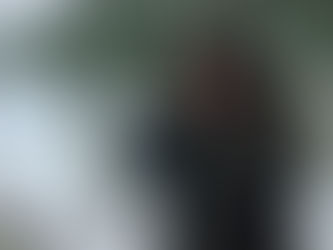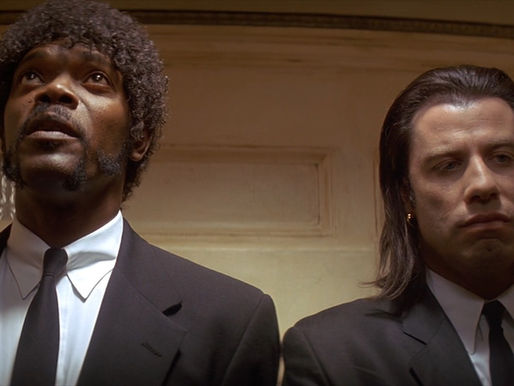top of page
Search
Crime / Mystery
Classic Crime / Mystery Films from 1930 - 1999


Millers Crossing (1990)
Released in 1990, Miller’s Crossing marked the third feature from Joel and Ethan Coen, and solidified their reputation as fiercely intelligent filmmakers with a gift for genre reinvention. A stylized, cerebral, and morally ambiguous gangster tale, Miller’s Crossing is often hailed as one of the most underrated films of the 1990s, and one of the finest entries in the neo-noir tradition.

Soames Inscker
4 min read


True Romance (1993)
True Romance (1993) is a film that wears its heart, blood, and bullets on its sleeve. A dazzling, hyper-violent road movie wrapped in a gritty love story, it fuses Tony Scott’s sleek, kinetic direction with Quentin Tarantino’s stylized dialogue and raw narrative instincts. Though it initially underperformed at the box office, the film has since become a cult classic—beloved for its wild characters, memorable scenes, and unapologetically romantic core.

Soames Inscker
4 min read


Fargo (1996)
Few films have so masterfully combined grim violence, biting humor, and poignant humanity as Fargo (1996), a black comedy crime drama that represents the Coen brothers at the peak of their creative powers. Loosely inspired by real events (a claim the Coens cheekily open the film with, though it's fictional), Fargo is a uniquely American story of desperation, crime, and morality set against the icy, snow-covered backdrop of the Upper Midwest.

Soames Inscker
5 min read


Heat (1995)
Michael Mann’s Heat (1995) stands as a towering achievement in the crime genre, a meticulously crafted epic that explores the intersection of professionalism, obsession, and loneliness through the lives of cops and criminals on opposite sides of the law. At its core, Heat is a philosophical character study disguised as a heist thriller—brilliantly acted, visually hypnotic, and thematically resonant.

Soames Inscker
5 min read


Reservoir Dogs (1992)
Quentin Tarantino’s Reservoir Dogs burst onto the independent film scene in 1992 as a raw, audacious, and genre-defining crime thriller. Marking the debut of one of cinema’s most distinctive voices, the film shocked audiences with its stylized violence, razor-sharp dialogue, and non-linear storytelling. With a modest budget and an ensemble cast of rising stars, Reservoir Dogs became a cult classic and a blueprint for a new wave of indie filmmaking.

Soames Inscker
2 min read


Se7en (1995)
In the grim corridors of neo-noir cinema, few films have cast as long and dark a shadow as David Fincher’s Se7en. Released in 1995, this bleak psychological thriller offered a jarring departure from conventional crime procedurals, replacing tidy resolutions with moral ambiguity, existential dread, and one of the most shocking endings in film history.

Soames Inscker
4 min read


GoodFellas (1990)
Few films have captured the allure, brutality, and internal contradictions of organized crime with the raw immediacy and cinematic energy of Goodfellas. Released in 1990 and directed by Martin Scorsese, Goodfellas is a relentless, exhilarating, and deeply immersive journey into the heart of the Mafia lifestyle—one that strips away the romantic gloss of previous gangster films and replaces it with a gritty, kinetic realism.

Soames Inscker
3 min read


The Usual Suspects (1995)
Few crime thrillers have embedded themselves into the pop culture psyche quite like The Usual Suspects. Released in 1995, Bryan Singer’s moody, twist-laden neo-noir is remembered not just for its stylistic cool and clever dialogue but for delivering one of the most audacious and talked-about twist endings in modern cinematic history.

Soames Inscker
4 min read


The Silence of the Lambs (1991)
In the realm of psychological thrillers, few films have reached the chilling heights of The Silence of the Lambs. Released in 1991, Jonathan Demme’s masterwork is both a gripping procedural and a deeply unsettling journey into the darkest recesses of the human mind. With standout performances, razor-sharp direction, and a script that balances horror with intelligence, the film became an instant classic—and remains a defining entry in American cinema.

Soames Inscker
4 min read


The Shawshank Redemption (1994)
Few films in modern cinema have earned such enduring affection, critical reassessment, and mythic status as The Shawshank Redemption. Quietly released in 1994 to modest box office returns, it found new life through word of mouth, home video, and television airings—eventually ascending to a place many consider sacred in film history. Today, it's widely regarded as one of the greatest films ever made, and rightfully so.

Soames Inscker
3 min read


Pulp Fiction (1994)
Quentin Tarantino’s Pulp Fiction isn’t just a movie—it’s a cultural detonation. Released in 1994, it redefined independent cinema, catapulted its director to auteur status, revitalized the careers of fading stars, and reshaped what Hollywood dared to call mainstream. With its intertwining narratives, non-linear storytelling, and stylized blend of ultraviolence and deadpan humour, Pulp Fiction is a bravura piece of filmmaking that still feels dangerous, fresh, and hypnotically

Soames Inscker
3 min read


Evelyn Prentice (1934)
While William Powell and Myrna Loy are best remembered for their sparkling chemistry in comedies like The Thin Man series, Evelyn Prentice (1934) offers a fascinating early glimpse of the duo in a markedly different light.

Soames Inscker
3 min read


I Love You Again (1940)
Few on-screen pairings in classic Hollywood can rival the enduring charm and comedic synergy of William Powell and Myrna Loy. In I Love You Again (1940), their 9th collaboration, the duo once again delivers a delightful screwball comedy that deftly blends romance, mistaken identity, and con artistry into a briskly entertaining package.

Soames Inscker
3 min read


The Birds (1963)
The Birds (1963) is Alfred Hitchcock’s most enigmatic and unsettling film—an apocalyptic thriller cloaked in the skin of a psychological drama. Unlike his earlier masterworks such as Psycho or Rear Window, The Birds defies easy classification. It begins like a sophisticated romantic comedy, morphs into a slow-burn psychological mystery, and then erupts into one of cinema’s most unique horror spectacles: nature turned predator.

Soames Inscker
5 min read


Topper Returns (1941)
Topper Returns (1941) is the third and final entry in the delightfully offbeat Topper series, which began in 1937 with Topper, followed by Topper Takes a Trip (1938).

Soames Inscker
4 min read


Lethal Weapon 2 (1989)
Lethal Weapon 2, released in the summer of 1989, is the explosive sequel to the hugely successful 1987 buddy cop film Lethal Weapon. Directed once again by Richard Donner and written by Shane Black (with significant rewrites by Jeffrey Boam), the film ups the ante in terms of action, comedy, and emotional resonance.

Soames Inscker
4 min read


Turner and Hooch (1989)
Turner & Hooch (1989) is a quintessential example of the buddy-cop comedy formula with an inspired twist: one half of the duo is a rambunctious, slobbering Dogue de Bordeaux. Directed by Roger Spottiswoode and starring Tom Hanks at the height of his comedic phase, the film merges crime-solving, slapstick humor, and unexpected emotional depth into a commercially successful and fondly remembered entry in the genre.

Soames Inscker
5 min read


Dragnet (1987)
The 1987 film Dragnet is a sharp, satirical update of the iconic police procedural television series created by Jack Webb in the 1950s. Directed by Tom Mankiewicz (a veteran writer of James Bond and Superman films), Dragnet reimagines the sober, no-nonsense law enforcement style of the original for a more ironic, comedic 1980s audience.

Soames Inscker
5 min read


12 Angry Men (1957)
12 Angry Men (1957) stands as one of the most powerful and enduring courtroom dramas in the history of American cinema. Directed by Sidney Lumet in his feature film debut and based on the teleplay by Reginald Rose, the film explores justice, prejudice, and the power of reason—all within the confines of a single jury room.

Soames Inscker
5 min read


Ocenas Eleven (1960)
When Ocean’s 11 premiered in 1960, it was less a film and more a cultural event. Marketed as the ultimate Rat Pack vehicle, it brought together the most charismatic entertainers of the era—Frank Sinatra, Dean Martin, Sammy Davis Jr., Peter Lawford, and Joey Bishop—for a stylish caper set against the glittering backdrop of Las Vegas.

Soames Inscker
5 min read
bottom of page


